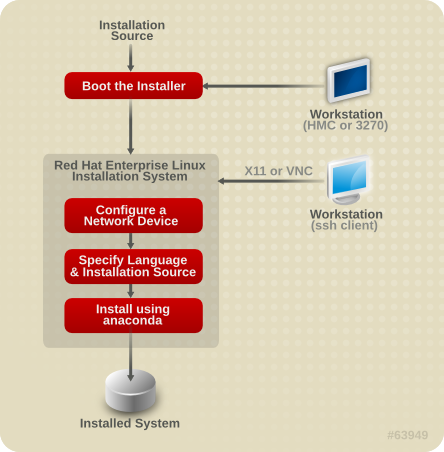18.2. Overview of the System z Installation Procedure
You can install Red Hat Enterprise Linux on System z interactively or in unattended mode. Installation on System z differs from installation on other architectures in that it is typically performed over a network and not from a local DVD. The installation can be summarized as follows:
18.2.1. Booting (IPL) the Installer
After establishing a connection with the mainframe, you need to perform an initial program load (IPL), or boot, from the medium containing the installation program. This document describes the most common methods of installing Red Hat Enterprise Linux 6 on System z. In general, you can use any method to boot the Linux installation system, which consists of a kernel (kernel.img) and initial ramdisk (initrd.img) with at least the parameters in generic.prm. The Linux installation system is also called the installer in this book.
The control point from where you can start the IPL process depends on the environment where your Linux is to run. If your Linux is to run as a z/VM guest operating system, the control point is the control program (CP) of the hosting z/VM. If your Linux is to run in LPAR mode, the control point is the mainframe's Support Element (SE) or an attached IBM System z Hardware Management Console (HMC).
You can use the following boot media only if Linux is to run as a guest operating system under z/VM:
You can use the following boot media only if Linux is to run in LPAR mode:
You can use the following boot media for both z/VM and LPAR:
If you use DASD and FCP-attached SCSI devices (except SCSI DVDs) as boot media, you must have a configured zipl boot loader. For more information, see the Chapter on zipl in Linux on System z Device Drivers, Features, and Commands on Red Hat Enterprise Linux 6.


